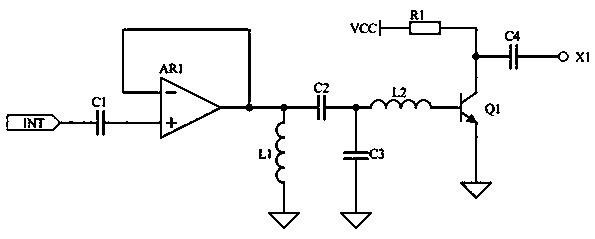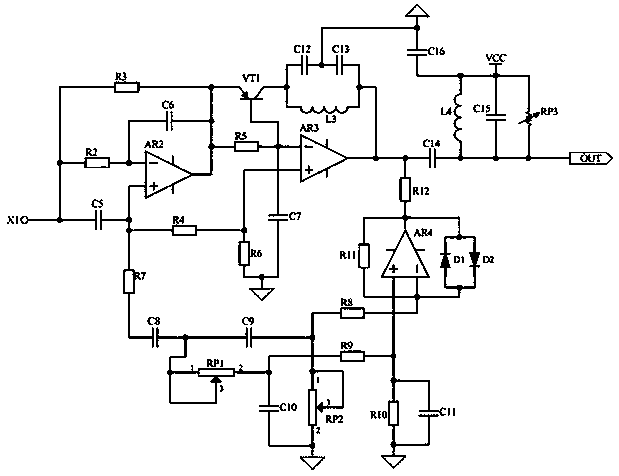Digital microwave signal adjusting circuit
A digital microwave and signal conditioning technology, applied in the direction of DC-coupled DC amplifiers, differential amplifiers, and improved amplifiers to reduce the impact of noise, etc., can solve the problems of strong Gaussian noise, low signal bandwidth utilization, and transmission band affecting bit error rate and transmission issues of reliability
- Summary
- Abstract
- Description
- Claims
- Application Information
AI Technical Summary
Problems solved by technology
Method used
Image
Examples
Embodiment Construction
[0012] Regarding the aforementioned and other technical contents, features and effects of the present invention, refer to the appended figure 1 to attach figure 2 It will be apparent from the detailed description of the embodiments. The structural contents mentioned in the following embodiments are all based on the accompanying drawings of the description.
[0013] Exemplary embodiments of the present invention will be described below with reference to the accompanying drawings.
[0014] A digital microwave signal adjustment circuit includes an input impedance matching module, a baseband transmission modulation module and an output impedance matching module. The input impedance matching module is used to isolate the digital microwave signal and send it to the LC network to perform impedance matching on the input signal. Such as figure 1 As shown, the input impedance matching module includes an operational amplifier AR1. The non-inverting input terminal of the operational ...
PUM
 Login to View More
Login to View More Abstract
Description
Claims
Application Information
 Login to View More
Login to View More - R&D
- Intellectual Property
- Life Sciences
- Materials
- Tech Scout
- Unparalleled Data Quality
- Higher Quality Content
- 60% Fewer Hallucinations
Browse by: Latest US Patents, China's latest patents, Technical Efficacy Thesaurus, Application Domain, Technology Topic, Popular Technical Reports.
© 2025 PatSnap. All rights reserved.Legal|Privacy policy|Modern Slavery Act Transparency Statement|Sitemap|About US| Contact US: help@patsnap.com


